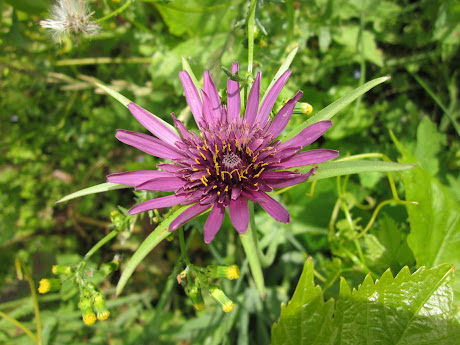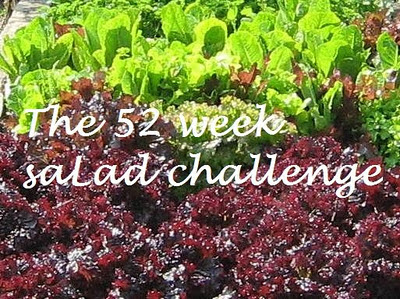Plant Profiles: Hydrangeas, especially H. paniculata
The first plant gifted to VP Gardens was this Hydrangea macrophylla from one of our neighbours, who'd proudly propagated lots of them and passed on his surplus to us and the other newcomers to our part of the estate.
That was 15 years ago and I'm sorry to admit I've neglected our gift by relegating it to one of the garden's most shady corners. It's a good filler plant, but like many people, I'm not that keen on the mophead hydrangeas, especially when they're sugar pink from an alkaline soil.
Last year saw a sea-change in my general dismissal of hydrangeas. I was with Victoria and Charlotte on our post-Fling road-trip around Oregon and a friend suggested we visit Dancing Oaks nursery, close to the farmstead where we were staying. Amongst their many treasures were a number of fine-looking hydrangeas of various species and hue, with Hydrangea quercifolia 'Pee Wee' looking particularly perky to me.
Then I visited Aberglasney in Wales early this year where the Head Gardener's planting of Hydrangea paniculata stopped me in my tracks. Their faded blooms were exploding out of the borders making a firework-like display. 'If they're that spectacular in January', I thought, 'imagine what they're like in peak flower'.
Well, imagine no more VP, take a gander at this:
 |
| Hydrangea paniculata 'Limelight' - also has an RHS Award of Garden Merit |
The best thing - in my view - about H. paniculata and some of the other species like H. quercifolia, is their colours stay true irrespective of the soil pH. There's no danger of that in-between muddy purple hue that many of the mopheads adopt. As well as the dead flowers providing interest well into the depths of winter, many H. paniculatas also undergo a colour change when in bloom - these 'Limelight' flowers will darken and develop a pinkish tinge later on.
I'm currently hacking back the shrubbery at the bottom of our garden and I've surprised myself by putting a hydrangea at the top of the possibles for my planting list...
-------------------------------------------------------------------------------------------------------------------
Cultivation Notes
 |
| A closer look at H. 'Limelight' |
Several H. paniculata have the RHS Award of Garden Merit - Graham Rice describes some of them in his article on 10 AGM hydrangeas, which includes H. 'Limelight'. I saw them looking good with astilbes in the woodland garden at Beth Chatto's garden last week and Ursula Buchan recommends Japanese anemones as a good companion.
 |
| H. paniculata 'Pinky Winky' |
Hydrangeas are relatively pest and disease-free - I've never had any trouble with them - though the RHS website has advice on hydrangea scale.
The National Collection of Hydrangeaceae - which includes hydrangeas - is at Lagg House, Dunure in Ayrshire.
 |
| Also worth considering: H. arborescens 'Annabelle' |
You may also like:
- The RHS general guide to hydrangeas, with lots of cultivar recommendations from several hydrangea species
- The RHS trials report on H. paniculata
- The US National Arboretum's Q&A guide to hydrangeas - includes good descriptions of the main cultivated species
-------------------------------------------------------------------------------------------------------------------
Latin without tears
Hydrangeas hail from Asia and North America; the genus name Hydrangea is derived from the Greek for water hydor, and aggos meaning vessel or jar, which refers to the fruit. There are 23 species and of those mentioned in this blog post:
- arborescens - from the Latin arboresco, becoming tree-like and this species can indeed grow tall. Native to eastern USA.
- macrophylla - from the Greek meaning large-leaved. Native to eastern Asia.
- paniculata - from the Latin for tuft panicula, and refers to the shape of the flowers. Native to eastern Russia, China and Japan.
- quercifolia - from the Latin Quercus, the binomial name for oak and folium for leaf, so you can easily imagine what the leaves of this hydrangea resemble. Native to south eastern USA.
Plant Profiles is sponsored by Whitehall Garden Centre.
Note to readers: Sponsorship goes towards my blogging costs; the words are my own. There are no cookies or affiliate links associated with this post.












A most enjoyable, and informative, post. I like hydrangeas, and just wish that I had room to grow a few of them. Flighty xx
ReplyDeleteThat's a shame Flighty, though they do need quite a bit of space. Our neighbour (he of the gifted hydrangeas) also used some of his surplus on the streetside side of his house :)
DeleteWe have quercifolia lovely leaves.
ReplyDeleteThey are beautiful Sue - I used to have one, but I didn't plant it quickly enough :(
Delete